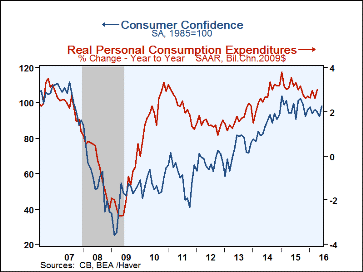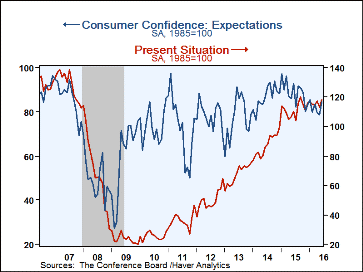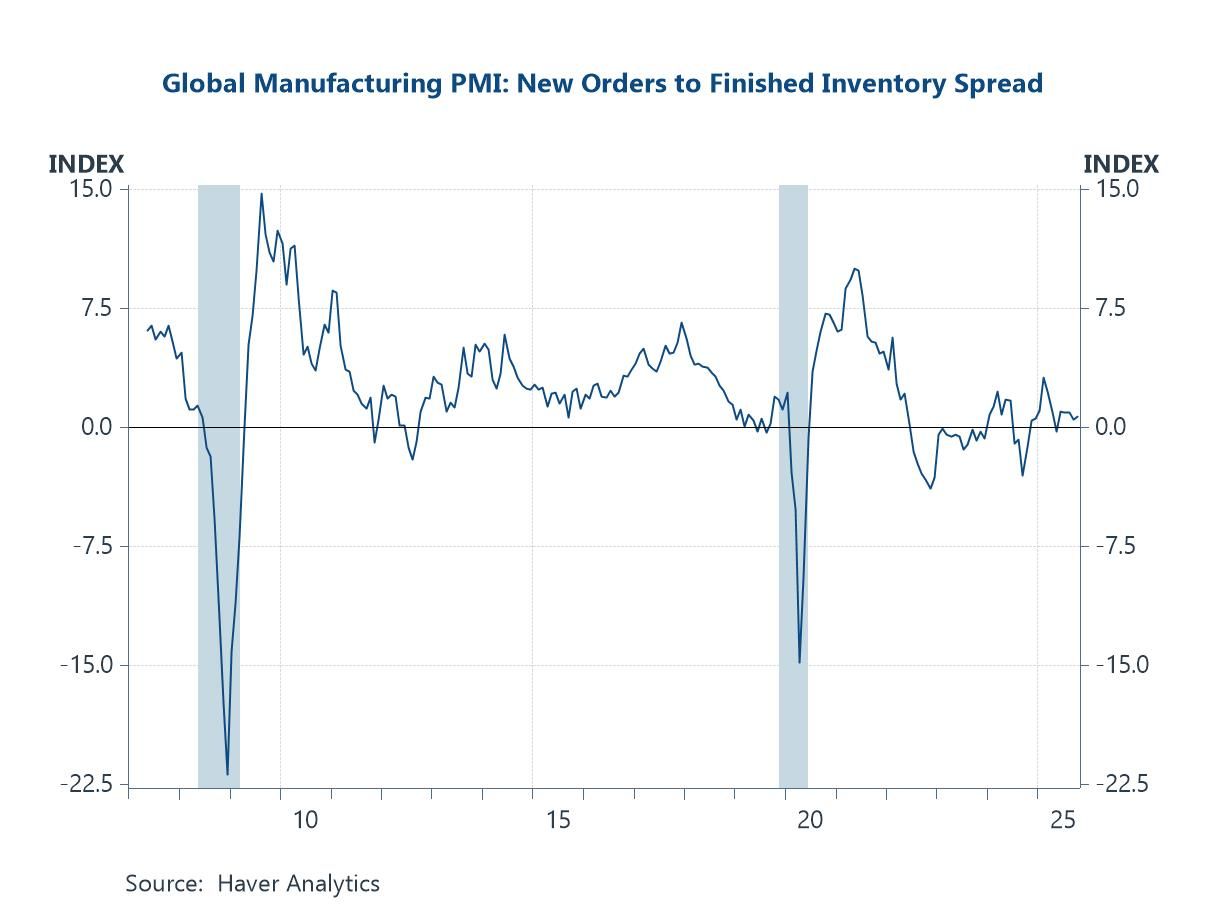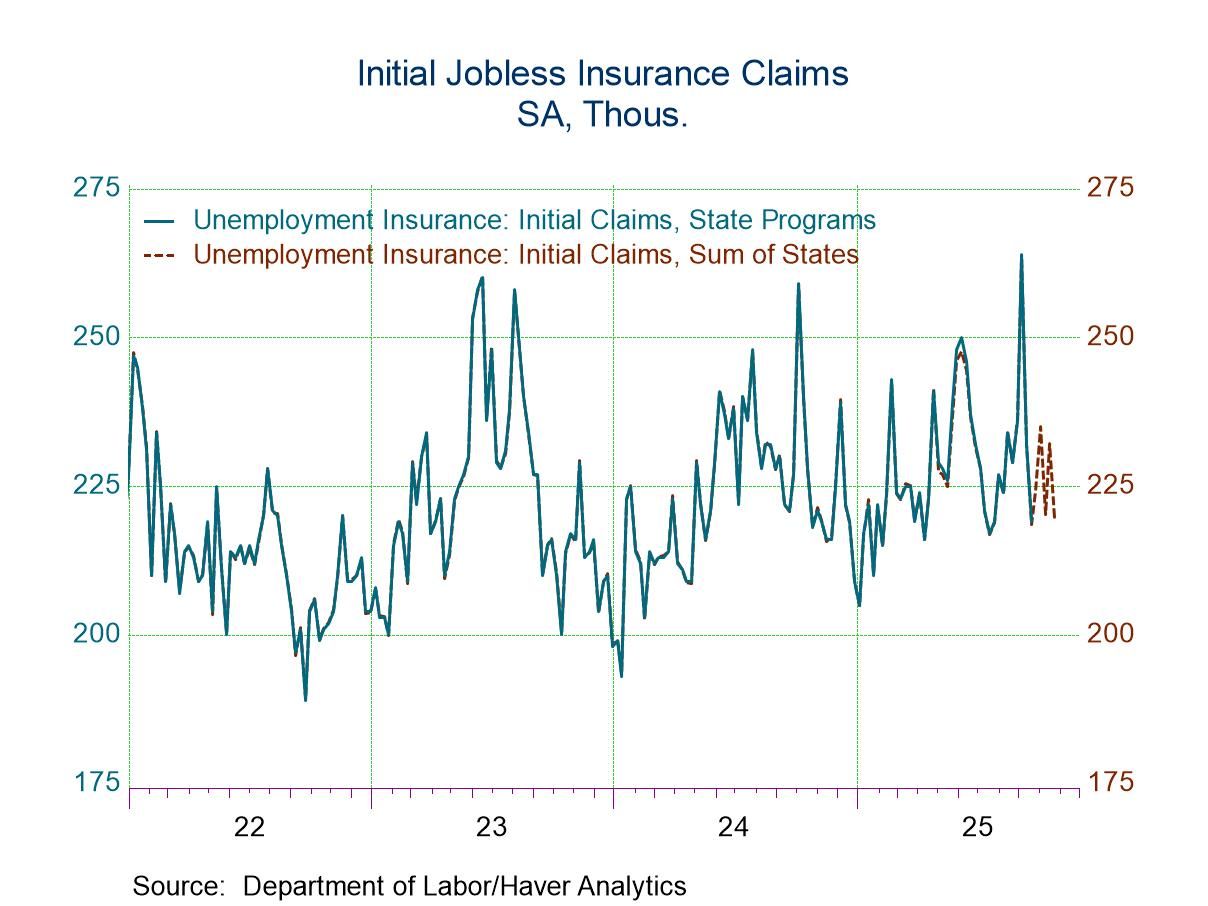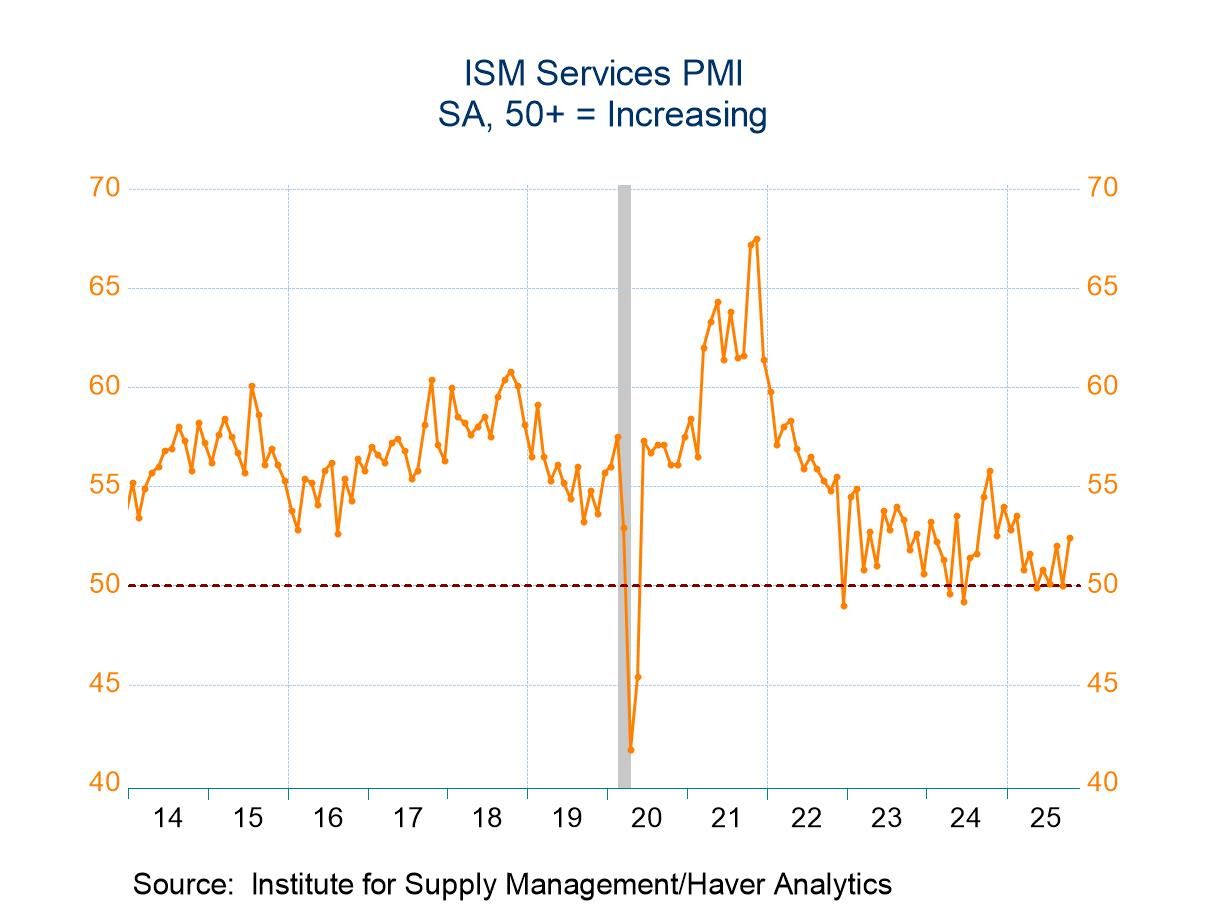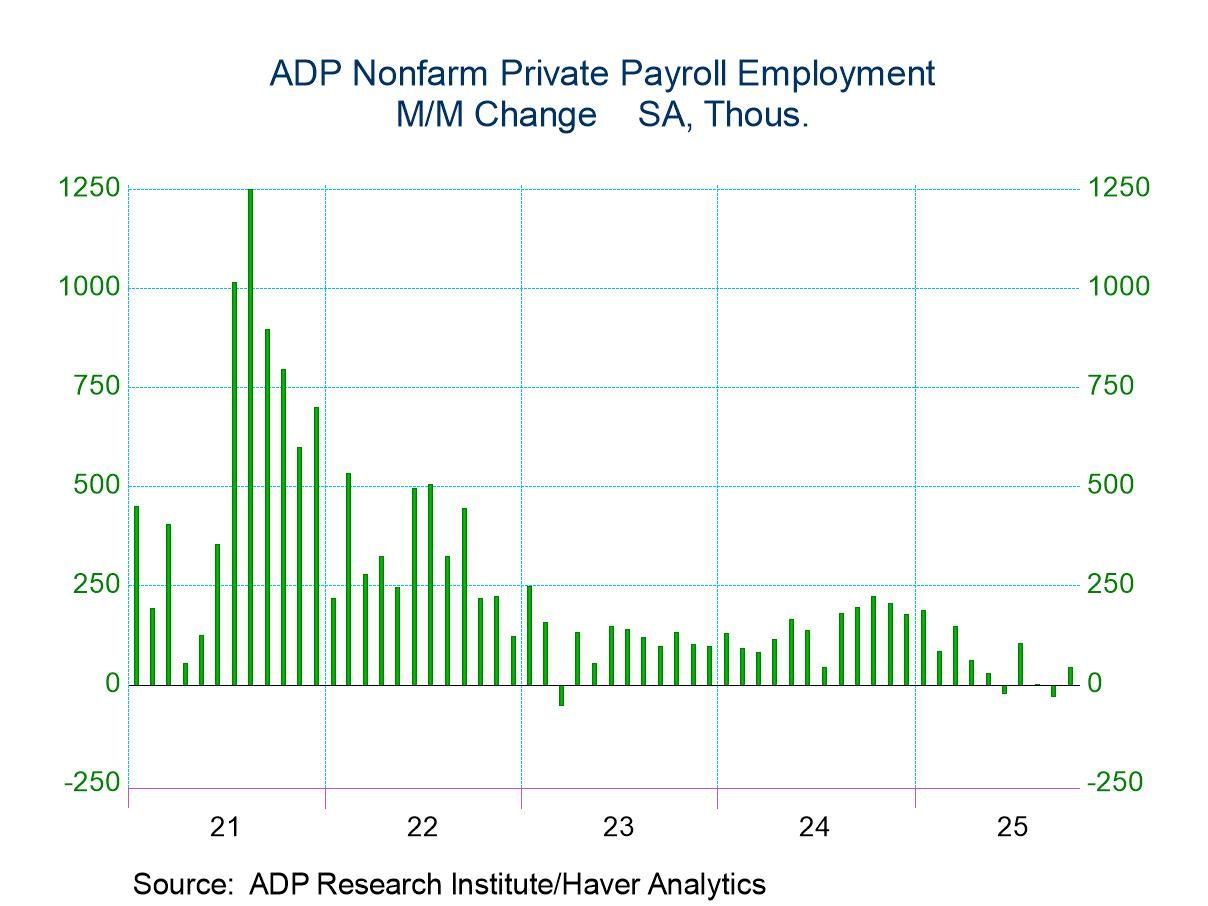 Global| Jun 28 2016
Global| Jun 28 2016U.S. Consumer Confidence Buoyed by the Young
by:Tom Moeller
|in:Economy in Brief
Summary
The Conference Board's Consumer Confidence Index increased 6.1% during June to 98.0 (-1.8% y/y) from 92.4, revised from 92.6. The latest figure was the highest since October and beat expectations for 93.0 in the Action Economics [...]
The Conference Board's Consumer Confidence Index increased 6.1% during June to 98.0 (-1.8% y/y) from 92.4, revised from 92.6. The latest figure was the highest since October and beat expectations for 93.0 in the Action Economics Forecast Survey. During the last ten years, there has been a 70% correlation between the level of confidence and the y/y change in real consumer spending.
By age group, confidence amongst respondents under age 35 improved sharply to the highest level since October 2000. Confidence amongst those aged 35-54 years also rose to the highest level since October. Working lower was confidence amongst respondents over age 55. It declined to the lowest level since May 2014.
The present situations reading for confidence overall increased 4.5% (7.3% y/y) to 118.3, the highest level in nine months. The expectations figure gained 7.6% (-8.9% y/y) to 84.5, down 12.9% from the January 2015 high.
The present situation improvement reflected a jump in the perception that business conditions were good. It also reflected a drop, however, in the perception that jobs were plentiful. Jobs were viewed as hard to get by a diminished 23.3% of respondents. The expectations figure increased due a rise in perception that business conditions would improve. Expectations that there would be more jobs firmed to the highest point since October, and an elevated percentage thought that income would increase.
Expectations for the inflation rate declined m/m to 4.7% and reversed increases since February. Higher interest rates were expected by 58.9% of respondents, remaining down sharply versus 72.6% in January.
Plans to buy a new home rose sharply to the highest level in six months. Major appliance buying plans, however, deteriorated. Intentions to buy a new car remained elevated.
The Consumer Confidence data is available in Haver's CBDB database. The total indexes appear in USECON, and the market expectations are in AS1REPNA.
Do Macro Variables Help Forecast Interest Rates? from the Federal Reserve Bank of San Francisco is available here.
| Conference Board (SA, 1985=100) | Jun | May | Apr | Y/Y % | 2015 | 2014 | 2013 |
|---|---|---|---|---|---|---|---|
| Consumer Confidence Index | 98.0 | 92.4 | 94.7 | -1.8 | 98.0 | 86.9 | 73.2 |
| Present Situation | 118.3 | 113.2 | 117.1 | 7.3 | 111.7 | 87.4 | 67.6 |
| Expectations | 84.5 | 78.5 | 79.7 | -8.9 | 88.8 | 86.6 | 77.0 |
| Consumer Confidence By Age Group | |||||||
| Under 35 Years | 132.1 | 110.3 | 121.3 | 17.2 | 116.0 | 106.6 | 93.1 |
| Aged 35-54 Years | 106.1 | 98.5 | 99.1 | 1.5 | 103.9 | 92.4 | 76.8 |
| Over 55 Years | 73.3 | 77.5 | 81.8 | -17.8 | 84.0 | 73.8 | 61.2 |
Tom Moeller
AuthorMore in Author Profile »Prior to joining Haver Analytics in 2000, Mr. Moeller worked as the Economist at Chancellor Capital Management from 1985 to 1999. There, he developed comprehensive economic forecasts and interpreted economic data for equity and fixed income portfolio managers. Also at Chancellor, Mr. Moeller worked as an equity analyst and was responsible for researching and rating companies in the economically sensitive automobile and housing industries for investment in Chancellor’s equity portfolio. Prior to joining Chancellor, Mr. Moeller was an Economist at Citibank from 1979 to 1984. He also analyzed pricing behavior in the metals industry for the Council on Wage and Price Stability in Washington, D.C. In 1999, Mr. Moeller received the award for most accurate forecast from the Forecasters' Club of New York. From 1990 to 1992 he was President of the New York Association for Business Economists. Mr. Moeller earned an M.B.A. in Finance from Fordham University, where he graduated in 1987. He holds a Bachelor of Arts in Economics from George Washington University.


